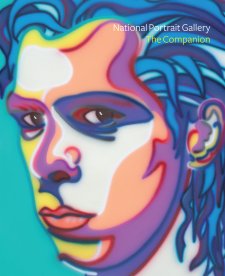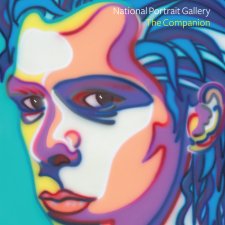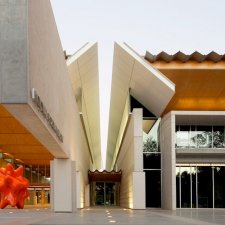- About us
- Support the Gallery
- Venue hire
- Publications
- Research library
- Organisation chart
- Employment
- Contact us
- Make a booking
- Onsite programs
- Online programs
- School visit information
- Learning resources
- Little Darlings
- Professional learning
The Seekers formed in Melbourne in 1962 when jazz singer Judith Durham met Athol Guy, who was in a folk trio with Bruce Woodley and Keith Potger. With Durham (1943–2022) on lead vocals, Guy (b. 1940) on double bass and Potger (b. 1941) and Woodley (b. 1942) on guitars, they first performed together in a South Yarra coffee bar and released their debut LP, Introducing the Seekers, in 1963. The album was comprised largely of traditional folk, gospel and African American spiritual songs such as ‘This Train’, ‘All My Trials’ and ‘Kumbaya’, each lent a jazz feel through harmonies and Durham’s vocals. Signed to W&G Records, The Seekers released their first single – a version of ‘Waltzing Matilda – in November 1963. They then travelled to the UK as the on-board entertainment on a passenger cruise ship and within two days of their arrival in England in May 1964 they had appeared on The Tonight Show on BBC TV. They soon became regular guests on television and were offered an album deal with the World Record Club, for which they made the albums The Seekers and Hide and Seekers (the latter including a cover of Bob Dylan's ‘Blowin’ in the Wind’). In November 1964 they recorded ‘I’ll Never Find Another You’ at EMI's Abbey Road Studios. By February 1965 the song had bumped The Kinks from top spot on the UK charts and made The Seekers the first Australian band to achieve a UK No. 1 single. Selling almost two million copies, it reached No. 1 in Australia and No. 3 in the USA. Described by one expert as ‘too pop-oriented to be considered strictly folk and too folk to be rock’, The Seekers appealed to fans spanning all three genres and were named the Best New Group of 1964 in a poll conducted by New Musical Express. In April 1965 they played Wembley Stadium in a bill that included The Beatles and The Rolling Stones, and later that year they appeared on the Ed Sullivan Show, their single ‘A World of Our Own’ having reached No. 2 on the US Billboard Easy Listening Chart. ‘Morningtown Ride’ spent fifteen weeks on the UK Singles Chart in 1966; and ‘Georgy Girl’ became a Top 5 hit in Australia, the UK, Canada and New Zealand, and reached number one on the US Cash Box Top 100. In March 1967, The Seekers undertook their third Australian tour, during which they performed for some 200,000 people at the Sidney Myer Music Bowl in Melbourne. They were were named joint Australians of the Year in 1968 but disbanded later the same year, bowing out with a week-long season at The Talk Of The Town in London (which provided material for a live album) and an hour-long BBC TV special. The 1968 compilation The Best Of The Seekers became their first UK No. 1 album, knocking The Beatles (aka ‘The White Album’) from top spot and preventing The Stones’ Beggars Banquet from attaining it. The Best of The Seekers remained in the UK Top 40 for almost three years. The band regrouped in 1993 for a 25th anniversary reunion tour, in which they played over 100 concerts in Australia, New Zealand and the UK.
Melbourne artist Helen Edwards painted a portrait of Judith Durham and entered it in the Archibald Prize in 2010. Durham liked it so much that she asked Edwards to paint another one, but ‘with all the boys’ as well. ‘Getting them together was quite a challenge because they lead separate lives and careers’, Edwards recalls. But she persisted and was struck by how familial the group seemed. ‘To me, it was like three big brothers coming together with a little sister – a sister who can pack quite a punch.’
Gift of Judith Durham, Athol Guy, Keith Potger and Bruce Woodley 2012. Donated through the Australian Government's Cultural Gifts Program.
© Helen Edwards
Helen Edwards (age 66 in 2011)
Judith Durham AO (age 68 in 2011)
Athol Guy (age 71 in 2011)
Keith Potger (age 70 in 2011)
Bruce Woodley (age 69 in 2011)



On one level The Companion talks about the most famous and frontline Australians, but on another it tells us about ourselves.



Visit us, learn with us, support us or work with us! Here’s a range of information about planning your visit, our history and more!



We depend on your support to keep creating our programs, exhibitions, publications and building the amazing portrait collection!